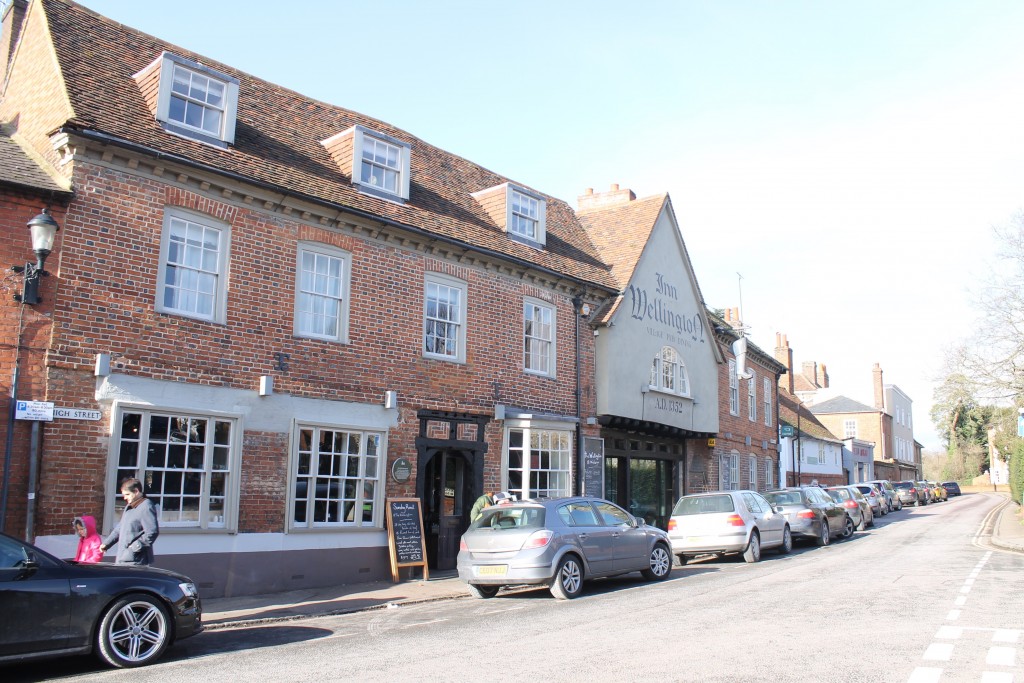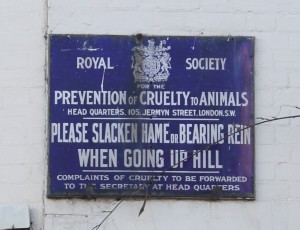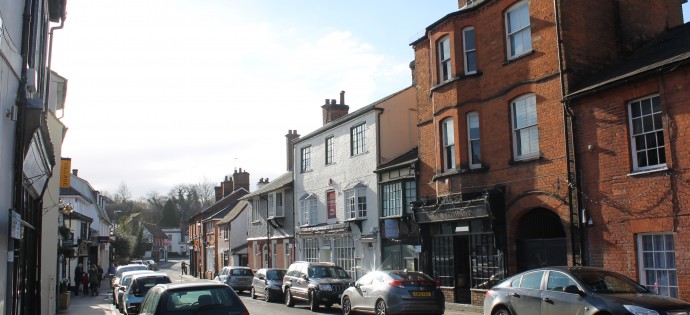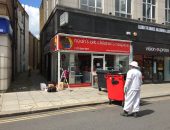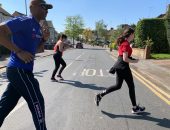This historic 400 mile highway linking London and Edinburgh has an undeniably seductive force and an epic scale. It’s rather like Route 66, lodged nostalgically in peoples’ imaginations; intact old stretches punctuated with coaching inns, rather than diners and gas stations. Over the years the original Great North Road has been widened or broken up by by-passes and motorways. However, there are a few glimpses of this old road within easy reach of Barnet, not forgetting our own high street lined with coaching inns, notably the Red Lion (rebuilt in the 20th century) and The Mitre.
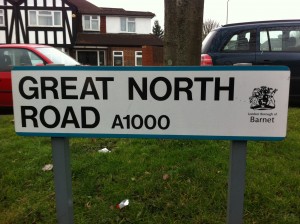
Travelling south to Smithfield (11 miles)
Since before Tudor times the Great North Road passed through Barnet – this was the route taken by the triumphant Edward of York after the Battle of Barnet in 1471 – and continuing south along the A1000 you pass through Whetstone, where the toll-gate operated until 1863 and where the current Griffin pub stands, there has been an inn for centuries. Further along the A1000, to the south of the North Circular Road, in Oak Lane near the entrance to the St Pancras and Islington Cemetery, an ancient oak known as Turpin’s Oak still survives. This harks back to Finchley Common, originally the Bishop of London’s hunting ground – 1,500 desolate acres and a notorious haunt of highwaymen until the area was enclosed in the 1820s.
For a glimpse of old East Finchley “village” turn off the main road walk along Church Lane (previously Bulls Lane) which dates back to at least the 17th century. The old road followed Oak Lane, King Street, The Walks and Market Place in contrast to the current High Road, although there isn’t much left to see. Continuing south on the main road (A1000) The Old White Lion and Bald Faced Stag are more examples of popular coaching inns still standing, although in the coaching days, East Finchley was just a small village edge of the common.
Continue south and take North Hill, the old road into Highgate, historically a busy hilltop village (compared to East Finchley). Its authentic character was preserved by digging the cutting forming Archway Road that opened in 1813 (after tunnelling failed), by-passing the village and sparing travellers such a steep climb up the hill. Dick Whittington was doing just this when he was called back to London by the sound of the Bow Bells, an event commemorated by the Whittington Stone on Highgate Hill and the hospital that bears his name.
At the bottom of Highgate Hill beyond the Archway roundabout, the old road continues along Holloway Road (literally a muddy “hollow way” running past fields) to Highbury Corner into Upper Street, where the Angel Inn marked the junction at the southern end, a busy hub for coach travellers. Many people started their journeys or changed coaches at the Angel or the more famous Peacock, another vanished inn (mentioned in Tom Brown’s Schooldays). Going south, the final stretch of the Great North Road was down to Smithfield. Narrow St John’s Street was the original route, but Goswell Road and Aldersgate Street became more convenient when the General Post Office moved to St Martin’s-Le-Grand in 1829 from Lombard Street.
Travelling north to Welwyn (16 miles)
An important junction on the on the northern mail-coach road and 11 miles from London, Chipping Barnet grew rapidly during the early 1800s due to this fortuitous location. In the 1820s when widespread improvements were made to the roads directed by Thomas Telford, the steep hill on the southern side was banked, making the approach to the town much easier. Barnet was an ideal place to change teams of coach horses and the inns vied for business, often quite aggressively with ostlers from different taverns getting into fights with each other. The Great North Road leaves the town crossing Hadley Green, passing Hadley Highstone and the junction with the old road to Birmingham, the Northwest and Holyhead for Ireland (Kitt’s End Road). Near Ganwick Corner you pass the old coaching inn, the Duke of York before going under the M25 and into Potters Bar. The place name suggests its link to the coaching era as the term “bar” indicates the location of a turnpike gate. The National Trust property, Morven Park dates back to the 14th century and the toll house was on the original old road that apparently passed through the grounds.
Further along the A1000 past Little Heath the hamlet of Swanley Bar signifying an earlier course of the road and north of Brookman’s Park is Bell Bar, unremarkable other than for a steak house and the 1930s built pub the Cock o’ the North. Continuing north, the road curves to the left around Hatfield Park on a newer course, but Woodside Lane is the original road leading up to the southern entrance of Hatfield House, presumably how the Tudors approached from London. A detour along Woodside Lane (opposite the Cock o’ the North and a continuation of Bell Lane) will take you up to Wildhill Road where you can see this entrance to Hatfield House. Wildhill Road will bring you back to the A1000 at Brookmans Park.
The current A1000 takes an attractive route following the old stone wall, with the railway on the left hidden in a cutting. Ignore most of Hatfield until you get to the old town and take a detour to admire quaint, historic Fore Street, an evocative reminder of the days when Hatfield House was a royal palace, a little like Old Windsor, but in miniature. Back on the Great North Road, note the Old Red Lion opposite the station, following the road to the right before briefly taking the A414 westbound and drive alongside the A1(M) before crossing it at Stanborough. Here the Great North Road is the B197 instead of the A1000 which passes through Welwyn Garden City. Follow the old road past Lemsford and Ayot Green towards Welwyn village.
This stretch of the road weaves across the motorway with the odd glimpse of the past like the Red Lion pub near Ayot Green, but once Digswell Hill descends into London Road, entering Welwyn is almost like going back in time (picture top looking south). Like Highgate, it has retained its authentic character having been by-passed by the A1000 and A1(M). Stop for a stroll around the backstreets and perhaps a drink or bite to eat at one of the old coaching inns. The Wellington by the church is perhaps currently the best choice. The old road (B197) continues north through Knebworth and Old Stevenage towards the handsome market town of Baldock, which has also retained much of its old character. However, Welwyn makes a quaint and atmospheric conclusion to this journey offering a vivid glimpse of the coaching era. Either retrace the journey to see it from the other direction or, if you’re in a hurry, return to Barnet directly on the A1(M).
